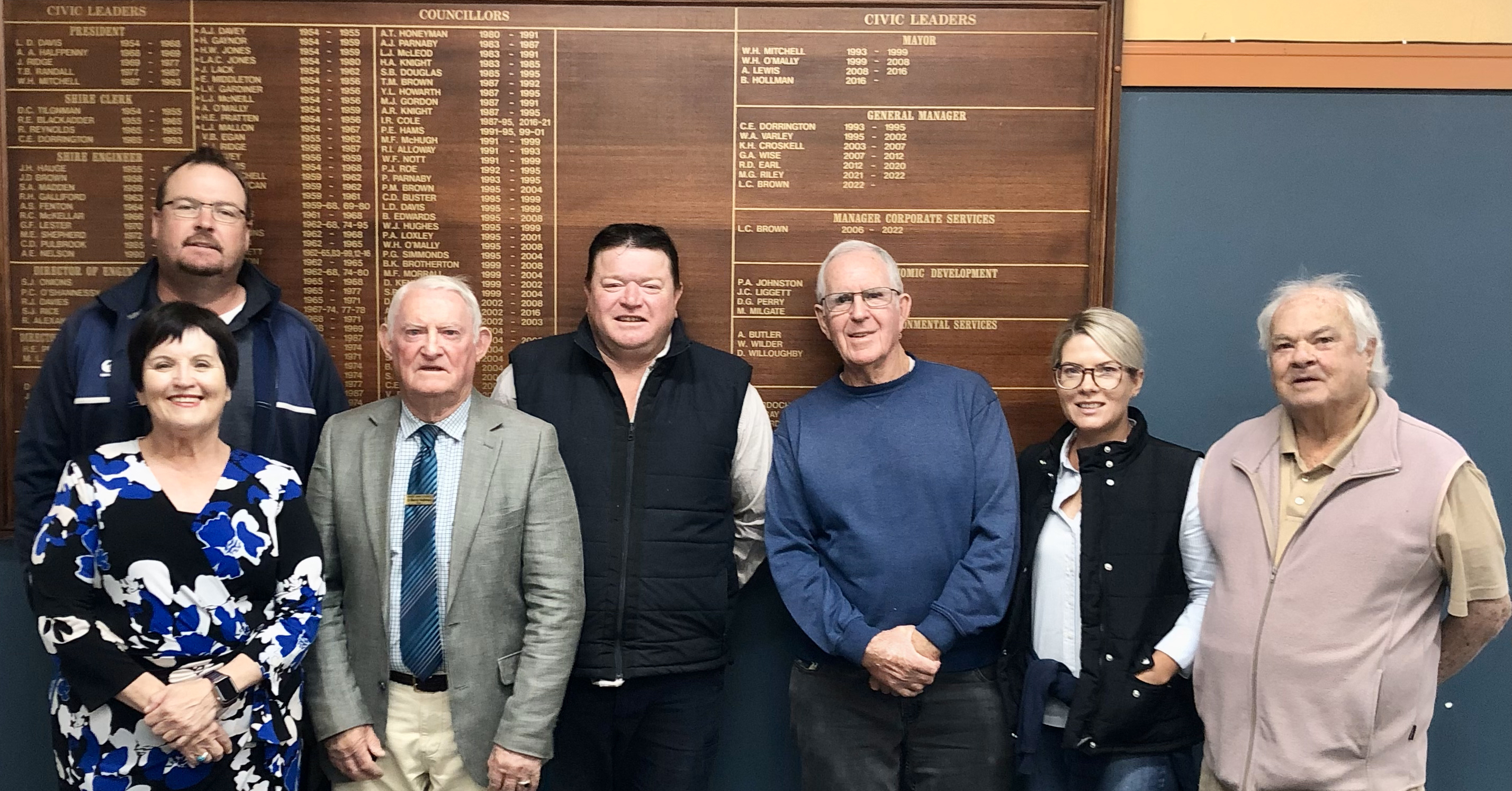
Cr Nathan Ryan (standing behind LGNSW President Darriea Turley), Cr Barry Hollman (Mayor), Cr Lachlan Ford (Deputy Mayor), Cr Robert Stutsel, Cr Sarah Barton and Cr Victor Bartley during Cr Turley's recent visit to Bourke Shire Council.
30 May 2023
Environmental Planning and Assessment Amendment (Housing and Productivity Contributions) Bill 2023
Late last week I met with the Minister for Planning and Public Spaces, The Hon. Paul Scully seeking an urgent briefing on the Environmental Planning and Assessment Amendment (Housing and Productivity Contributions) Bill 2023.
Critically, this Bill does not propose to make changes to local infrastructure contributions collected by councils.
Rather, the Bill is seeking to introduce a new, broad-based infrastructure contribution scheme to replace the existing Special Infrastructure Contribution system.
The NSW Government will use the funding for State infrastructure that supports housing and productivity in high growth regions. This includes hospitals, schools, state and regional roads, transport infrastructure and measures to conserve the natural environment.
The Bill also proposes to permit the Minister to define via Ministerial Planning Orders "regions" for the purposes of ensuring that the contributions collected in a specific area are used for State infrastructure in that same area.
I reiterated to the Minister the importance of councils being consulted with on the setting of and any changes to regions.
In good news, the Bill also provides for up to $1 billion in grant funding over 10 years for councils to deliver local infrastructure, such as regional parks and sporting facilities. Again, this funding will only be available for use in the area in which it was generated through contributions.
The Department of Planning and Environment’s explanatory document for the reforms advises that councils will be involved in the development of “Infrastructure Opportunities Plans” that will outline the “long list” of infrastructure required to support housing and productivity growth in the identified regions.
The plans will be developed through an Urban Development Program coordinated by the department that includes state agencies, councils and industry, drawing from strategic planning. The Urban Development Program will provide forums for stakeholders to discuss the growth challenges for the regions where the Housing and Productivity Contribution will apply.
The opportunity for councils to input to this process is welcomed and we looks forward to understanding more details about how this will work in practice.
Quarterly housing statistics
It is pleasing to see the work and contribution of councils towards delivering more housing has been reflected in a recent report published by the Department of Planning and Environment (DPE).
The DPE’s Quarterly Insights Monitor Q3 (January to March 2023) attributes a fall in residential building approvals since mid-2021 to shortages of construction material and labour, rising interest rates, and falling housing prices.
Despite these lower overall approval numbers, the report confirms that councils’ local development assessment work has resulted in more than 63,000 dwellings being approved since July last year, with councils approving almost 17,500 dwellings during the March quarter alone. Approximately 66% of these dwellings were part of a multi-unit development.
Rather than due to hold-ups in rezonings and approvals, the data and commentary in the DPE’s report attributes a decline in dwelling targets for the year to a slowdown in the construction and completion phase of the pipeline. The report notes that:
- dwelling commencements were down 23% in the 12 months to December 2022 (48,538 dwellings) compared to the previous year.
- dwelling completions have fallen 7% in the 12 months to December 2022 (46,005 dwellings) compared to the previous year with further declines anticipated.
As the number of applications declines with the slowdown in the construction sector, so too do the number of approvals, yet we know that councils continue to overwhelmingly approve development applications at a consistent rate of around 97%.
The report also notes that regional housing programs underway in NSW continue to support the long-term target of 127,000 dwellings over 10 years by fostering a sustainable pipeline of supply. However, the interim target for June 2023 will not be met due to slowing construction activity.
These figures serve to demonstrate that despite recent media rhetoric, councils are very much contributing to the delivery of the housing supply pipeline. Key barriers to more housing are largely beyond council control and relate to challenges with the construction sector and broader economic conditions.
Emergency Services Levy (ESL)
As I mentioned in last week’s report, I have again raised with the Treasurer, the Minister for Emergency Services and the Minister for Local Government the need to urgently restore the ESL subsidy and decouple the ESL from rate peg.
Thank you to all the councils that have resolved mayoral minutes and written letters on this matter to Ministers and your local state MPs – it is so important that our collective voice on this matter is heard.
For those councils that have not yet passed a mayoral minute, I encourage you to do so. Templates here.
Grant funding integrity
The Government Sector Finance Amendment (Grants) Bill 2023 passed parliament late last week and is now awaiting assent.
The Bill is intended to bolster the integrity and transparency of NSW Government grant funding arrangements and is consistent with LGNSW’s 2023 election priority that called for all parties to commit to fairness, transparency and integrity of grant funding to councils
The Bill will require certain grant information to be made publicly available unless there is an overriding public interest against disclosure of the information.
Protecting local water utilities
A key advocacy priority of LGNSW is to protect local government ownership and management of council local water utilities (LWUs), and for the NSW Government to partner with councils to invest in these LWUs to bolster water security.
The NSW Government has introduced legislation to prevent any future privatisation of Sydney Water and Hunter Water, and I am aware that there has been some consideration of whether council LWUs should be similarly protected.
LGNSW has had discussions on this matter with both the Government and the Opposition and has made clear that while we support the intent of moves to protect local ownership of LWUs, it is critical to consult with the local government sector on how best this will be guaranteed.
The 89 LWUs across NSW have incredibly diverse and complex operating models, and partner with a range of entities in their critical water supply functions. One size fits all approaches are rarely the solution for local government, and this is an area that requires close involvement of the local government sector in any proposals for reform.
Sincerely,

BACK TO MAIN PAGE